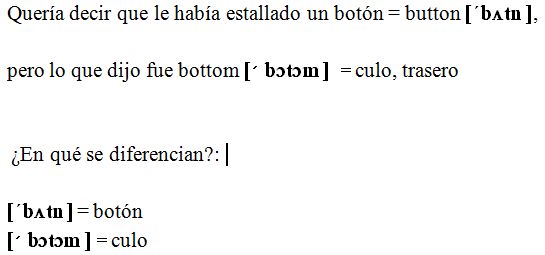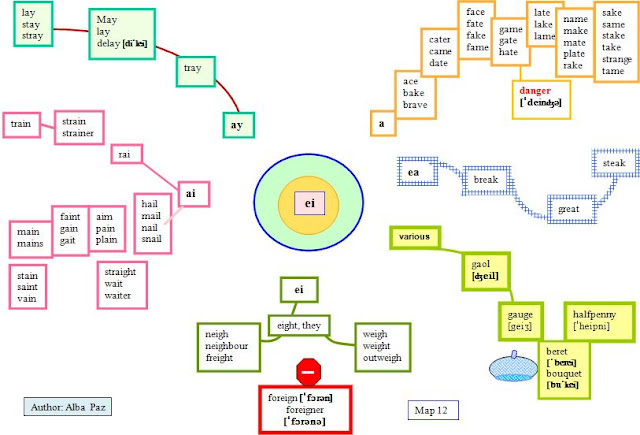Un mundo global exige una lengua global inteligible.
EL INGLÉS versus EL ESPAÑOL
El idioma
inglés es sintético y económico; el español usa perífrases y es muy
redundante, incluso pródigo en marcadores para precisar el significado. El inglés,
por contra, usa las mínimas señales, hay que estar muy atentos.
Conviene hablar un inglés inteligible y comprender bien, incluso la intención del
interlocutor, implícita en señales paralingüísticas.
Mucho/as confunden y pronuncian mal las siguientes palabras:
La o no se pronuncia en ninguna de estas palabras como en español, aunque a veces sí.
World (mundo) tiene una letra más
¡Que importante la l ! No la ningunees.
Hay que prestar atención a las diferencias aunque nos parezcan mínimas.
Las palabras button y bottom se parecen, pero el significado es muy distinto; el uso impropio da lugar a confusiones hilarantes y embarazosas, como la que relatamos.
ANÉCDOTA
Carmen, estudiante española, le dice a su patrona inglesa:
-My bottom has just blown up. Please, can you give me a needle?
 Mrs.Green looked at her in amazement.
Mrs.Green looked at her in amazement.
-Here you are the needle, dear, but it is hard to repair.
 |
| Button (botón) |
 |
| Bottom (trasero) |
Fíjate en las diferencias para no cometer el mismo error.
La distinción entre la m y la n es crucial. Las consonantes inglesas son más fuertes que las españolas, tan fuertes que a menudo se comen las vocales. En español las vocales son las que mandan y debilitan o se comen las consonantes, como en el caso de la d final o intervocálica.
En inglés hay que pronunciar clara, distinta y fuerte la consonante final porque muchas palabras se distinguen únicamente por este rasgo:
Algunas palabras que se distinguen por la consonante final/ cantidad v
din = estruendo
dim = turbio
bin = bidón
beam = rayo sol
bit = bocado
bitch = perra
chick = pollito
chip = astilla
him
hid = atención himn = himno
inn = posada
inch = pulgada
|
fin = aleta
film = película
fink = esquirol
gin = ginebra
gim = gimnasio
mill = Molino
meal = comida
meat = carne
nib = punta
nip = pellizco
pin = alfiler
pip = pepita
pill = pastilla
|
pit = hoyo
pitch = brea
ring = anillo rinse = enjuagar
sick = enfermo
sin = pecado
sing = cantar
sill = umbral
sip = sorbo
tin = lata
team = equipo
Tim = Timothy
|
sit = sentar
sick enfermo
them
then = entonces
tin = lata
team = equipo
tip = propina
tick
thick = grueso
think = pensar
vim = energia
win = ganar
VIP = v.imp.p
|
Mucho/as creen hablar inglés pero usan una jerga ininteligible o cansina difícil de entender.
Hay que:
1) Aprender a pronunciar los sonidos ingleses
2) Escuchar palabras inglesas en un contexto comunicativo
3) Usar palabras con los nuevos sonidos para fijar los nuevos circuitos cerebrales








































